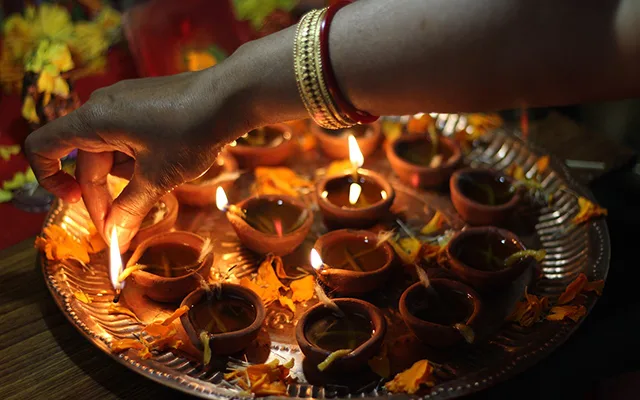The four different religions of Diwali
Explore the distinctive characteristics and the observing patterns among the four different religions that celebrate Diwali.
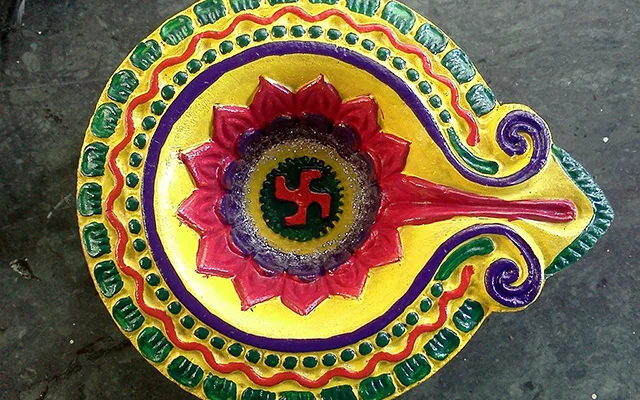
Diwali is the biggest and probably the most important religious festival in India. Over the centuries, it evolved to a major national festival that is observed by the vast majority of the population in almost every corner of the country. The main reason for this evolving lies to the fact that Diwali is not observed only by Hindus who represent approximately 80% of the Indian population but also by Jains, Sikhs, and some Buddhists.
The total percentage of the followers of those four religions in India, and consequently the faithful who observe Diwali reaches the level of 83% of the whole population. While parallel to that, there are also many who do not belong to any of those religions but also participate in some of the traditional celebrations of the feast.
Although each religion honors different events and deities during Diwali, the central core and the main message of the festivity is the same for all four of them. This includes the symbolic victory of good over evil, knowledge over ignorance and light over darkness. The fundamental metaphor of the light that overcomes the darkness dominates the celebration. Practically, countless small sources of light like oil lamps (diyas), candles and artificial lights are integral elements of the festivity and can be found almost everywhere. Temples, homes, official buildings, and shops are brightly illuminated and construct a magical landscape of devoutness and spiritualness that characterize the communities of the observers.
Hinduism
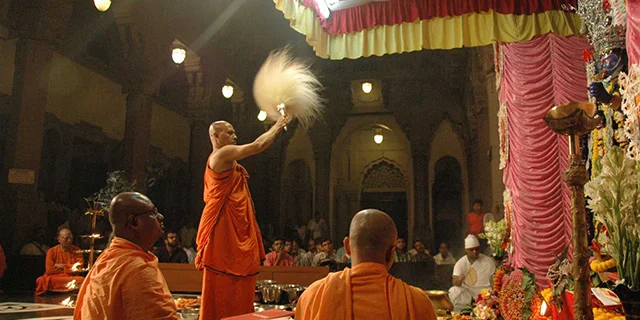
Hinduism is regarded as the oldest religion in the world and it is well-known for its diverse roots in various Indian cultures and traditions. Diwali, as one of the most significant festivities observed in Hinduism, is an interesting fusion of observed events, stories and narratives that reflect the deep roots and the great spectrum of this religion. It is an ancient celebration that varies regionally within India and includes multiple symbolisms through a series of worshiped deities.
The story of King Rama
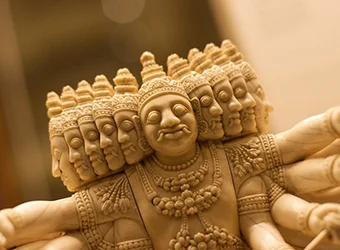
In northern India, the Diwali celebration commemorates the story of King Rama who returns to the Kingdom of Ayodhya together with his wife Sita. This return follows a fourteen-year-long exile period that occurred after the defeat of the demon king Ravana and his evil army.
Numerous rituals including lighting rows of the typical clay lamps (diyas) emphasize the triumph of the lord of virtue Rama against the demonic powers of Ravana. According to the tradition, the present-day celebrations are a reenactment of the joyous festivities of the people of Ayodhya upon the return of their King. More specifically, historical texts describe that the inhabitants of Ayodhya illuminated the whole kingdom with countless oil lamps and firecrackers.
Worshipping Krishna
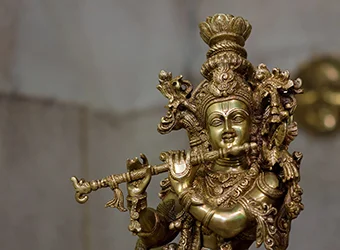
In the southern part of India, Diwali observes mainly the story where Lord Krishna, one of the incarnations of Vishnu, killed the demon Narakasura who was the evil king of Pragjyotishapura.
Ancient scripts mention that Lord Krishna conducted a great victory against Narakasura and released 16000 women who were captivated by the evil king.
This event is praised extensively one day before Diwali (Naraka Chaturdasi) with numerous enactments, temple visits, and prayers. More specifically, Naraka Chaturdasi is observed on the second day of the five-day-long festival of Diwali and it is well-known for the devout religious rituals and the food delicacies that are prepared for the day.
Praising, the Devi of wealth, pleasure and prosperity
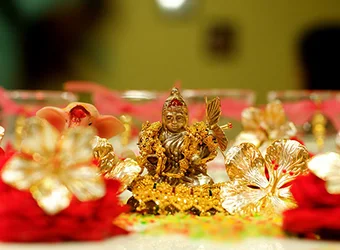
In many states of western India Diwali is associated with Lakshmi, the Goddess of wealth, pleasure and prosperity. Hindus see the festival as the commemoration of her marriage with Lord Vishnu as well as the celebration of her birthday.
According to the Vedic legend Lakshmi was born churning the cosmic ocean of milk by the Devas (gods) and the Asuras (demons), while the night of Diwali was the time when the Goddess chose Lord Vishnu as her husband. Diwali that falls on the new-moon day of Kartik is considered as the beginning of the New Year for the Hinduism religion and the faithful perceive the birthday of Lakshmi as ideal timing to pray to the Goddess asking for a prosperous and pleasant future.
Various customs among different regions
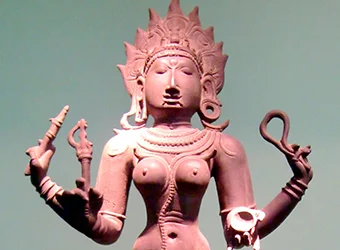
Eastern India offers a great variation on the followed rituals and the deities that are worshiped during the festival of Diwali. In some parts, the celebration is associated with the Goddess Durga who symbolizes the victory of good over evil. Kali, the dark and fierce avatar of the Goddess gets a prominent spot in many homes during the festivity.
Many communities commemorate the defeat of the demonic king Narakasura by Lord Krishna, while other areas paise Lord Ganesha the elephant-headed god who is the symbol of auspiciousness and wisdom. Ganesha, the son of Parvati and Shiva symbolizes also the new beginnings and the removal of obstacles.
Jainism
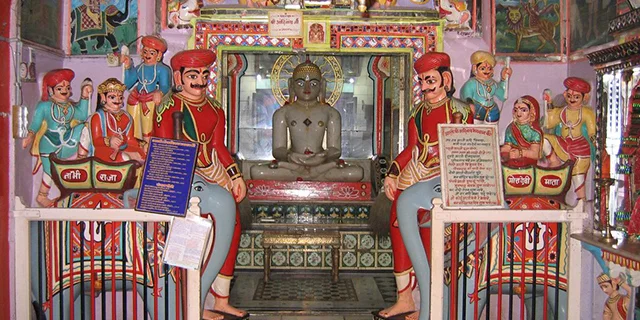
The Jain followers observe Diwali having at the core of their celebration, the death and the final nirvana of Mahavira “Mahavira Nirvana Divas”. Mahavira was the twenty-fourth savior and spiritual teacher (tirthankara) of Jainism and he is considered as the one who revived and reorganized this ancient religion.
Jainism represents 0,4% of the Indian population and has approximately four to five million followers around the world. The state of Gujarat and Rajasthan have the highest concentration of Jain believers who observe Diwali following similar rites and rituals to those followed by the Hindus.
Goddess Lakshmi is honored and countless oil lamps are lit during the festival. Jainism sees the lighting of lamps as a commemorating of the “great light Mahavira”, while this practice initiated by the 18 kings who gathered for Mahavira’s final teaching in 527 BC. It was also the timing of the death and final nirvana of a major spiritual teacher an event indicates the origins of Diwali according to Jainism.
Sikhism
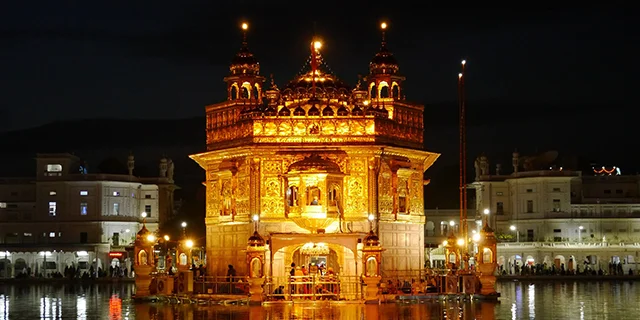
Sikhism is a relatively new religion that originated in the Punjab region in the second half of the 15th century. It is based on the sacred scripts of Guru Granth Sahib and the spiritual teachings of Guru Nanak. There are around 25 million Sikhs worldwide while in India, they represent 1.7% of the population. In Sikhism, Diwali is celebrated as Bandi Chhor Divas and it is associated with a historic event of Guru Hargobind’s release from the prison by the Mughal emperor Jahangir and his arrival in the Golden Temple in Amritsar. According to the legend, Guru Hargobind was released from the Gwalior fort prison on Diwali which was already one of the most important for Sikhs. More specifically, until that time, Diwali was time for the annual pilgrimage of Sikhs to holy sites such as the Temple of Amritsar.
Sikh religious leaders started to prefer using the term Bandi Chhor Divas instead of Diwali already from the end of the 20th century and the Sikh worship organization (Shiromani Gurdwara Parbandhak Committee) adopted officially the new name in 2003. The “Sikh Diwali” (Bandi Chhor Divas) is observed in a way very similar to Hindu Diwali principals. The faithful are illuminating houses and temples (gurdwaras) with numerous oil lamps, they exchange gifts and they spend time with their families. Music events organized by the temples and spectacular firework shows enhance the joyful notion of the festival.
Buddhism
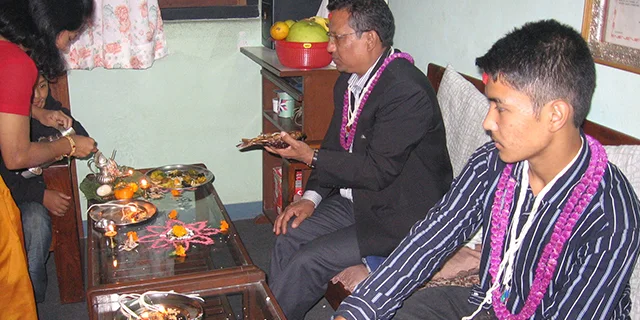
Diwali is not observed by most Buddhists apart from the Newar population of Nepal. Those are the historical inhabitants of Kathmandu valley who follow the Vajrayana Buddhism tradition.
Diwali is a five-day festival for the Buddhists in Nepalese valleys, while the festival can also be mentioned with the name Swanti. The followed rituals highlight the central role of women in the household and wish for good fortune and longevity for the family members. Windows and doors are decorated with flower garlands and the faithful worship Goddess Lakshmi and Lord Vishnu by offering prayers and lighting oil lamps (diyas).
